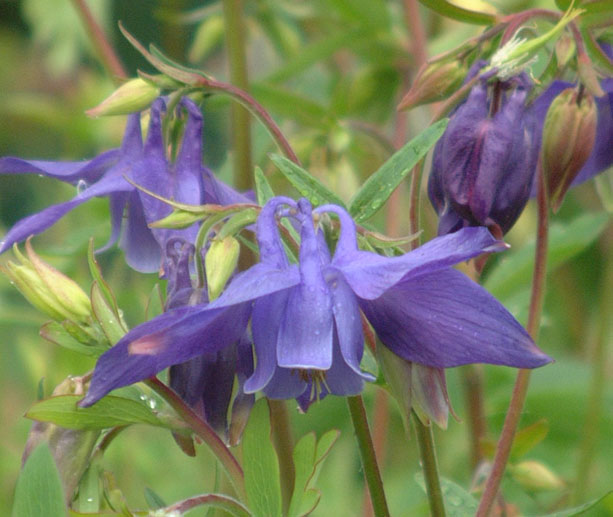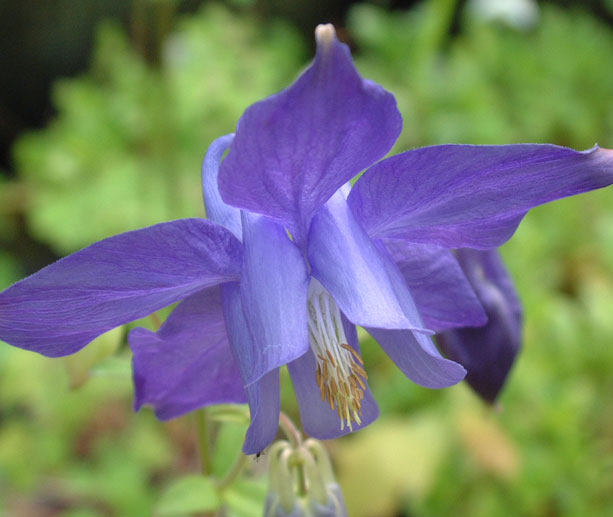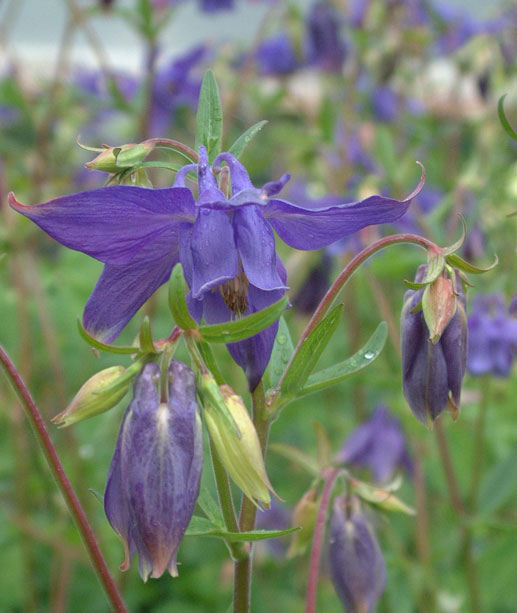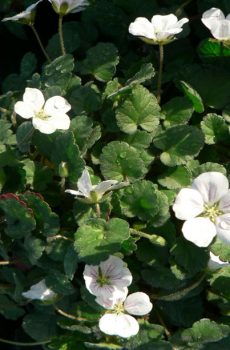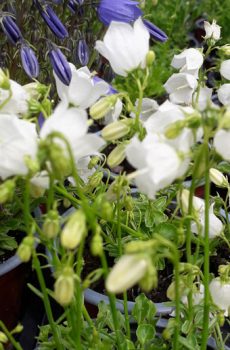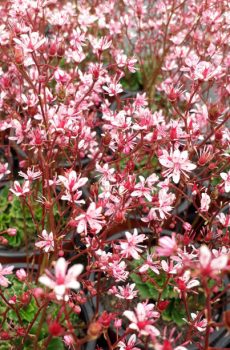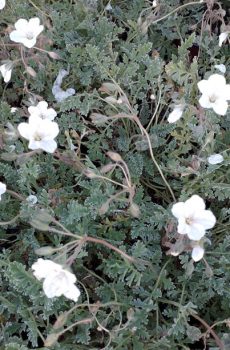Description
Aquilegia alpina
Bright blue bonnets on tall slender stems approx.30cm high. Flowers are occasionally blue with white. Can be shortlived but often self seeds
Aquilegia
Columbines are one of those plants that has a very long history of cultivation. It is mentioned in writings of Thomas Tusser in 1580, John Parkinson in 1629 and in Chaucer and Shakespeare’s Hamlet.
Aquilegia vulgaris is a Native of Europe, including Britain and is the traditional Grannie’s Bonnets of the cottage garden. In the late 19th century a florist call Douglas began to cross this with Aquilegia caerulea, canadense and chrysantha to begin the long-spurred hybrids that we know today under the name Aquilegia x hybrida. ‘Mrs Scott Eliot Strain’ was an early successful group which has been ‘superseded’ by ‘McKana’ Hybrids’ and ‘Monarch Strain’. Today there are many named colour strains to choose from. ‘Clematiflora’ is a name given to a group of none spurred hybrids.
Columbines grow in a wide variety of soil types providing they don’t get too dry or too wet in winter. They will grow in full sun or part shade. One of their chief requirements is that they do not get too crowded in, allow them some air around the crown and see that other plants don’t flop over the top of them. They are not terribly long lived, but will seed themselves around in areas they are happy.
It was one of the badges of the House of Lancaster. Aquilegia caerulea, with its blue and white flowers, is the state flower of Colorado.
Columbines used to be extensively used in times of Chaucer and Shakespeare as garnishes for food and as an ingredient in medicines. Their use stopped, according to Linnaeus, when one too many children died from excessive intake. It is not used today.
Aquilegia comes from the Latin ‘aquila’ = an eagle, a reference to the shape of the petals with their curved spurs being like an eagle’s talons. Columbine is also a reference to the flower shape. ‘columba’ is latin for a dove, the flowers reminding people of a dove in flight with the petals being the wings and the spurs the neck and head; or alternatively the upended flower resembles doves drinking at a bowl. This is coincidentally the derivation of the old Saxon name ‘Culverwort’, Culver being Saxon for a pigeon. Aquilega was used in Medieval paintings to represent the dove of peace.
Aquilegia alpina, despite the thoughts of anything alpine being miniature, has a flowering stem of 30-40cm. It has beautiful large blue flowers, occasionally blue and white and comes from the European alps. It unfortunately seldom breeds true from seed in the garden as Aquilegias are noted for their promiscuity.
Aquilegia canadensis was formerly known as A.elegantula ,according to Reginald Farrer,who also states in his book The English Rock Garden, written in 1913 that ‘’It is common and easy’’ I think that his use of the word ‘common’ is meant to represent the fact that it is readily available rather than an air of snobbery. It is a tall growing species with what can be slight variations of yellow flowers with scarlet spurs, sometimes more scarlet than yellow & vice-versa.
A.canadensis ‘Little Lanterns’ is a variety that has come from this which is slightly more compact habit of slightly darker, finely cut foliage with prolific flowering of scarlet-orange bonnets & self seeds fairly reliably.
Common Name: alpine columbine
Family: Ranunculaceae
Flowers: May-June
Height: 30-60cm
Spread: 10cm
Position: Sun or part shade where they will not get too wet or extreme dry
Use: Rock garden, border plant,woodland shady areas
